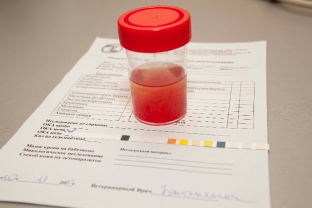Urolithiasis is one of the leading urological pathologies and one of the most common causes of emergency admission of patients to medical hospitals. A stone formed in the urinary tract may not make itself felt in any way for a long time, and only after it begins to move along the urinary tract, the first symptoms of the disease may appear. Often, the symptoms of urolithiasis occur acutely in the form of renal colic and other symptoms, while the patient should immediately seek medical help. The symptoms of urolithiasis are very characteristic and it is quite easy to recognize the disease by the clinical picture.
Pain is the main symptom of urolithiasis
The very first and main manifestation of urolithiasis is pain syndrome, which occurs in the form of renal colic - an acute attack of pain of varying duration and intensity, depending on the localization of the stone. Renal colic is provoked by a spontaneous violation of the outflow of urine resulting from obstruction of the urinary tract, its duration is different in each individual case. Depending on the site of the obstruction, the nature of the pain may be as follows:
- Renal pelvis stones provoke pain in the corresponding side or lumbar region if they are large;
- proximal ureteral stones cause an attack of acute spasmodic pain that occurs spontaneously;
- stones in the distal ureter cause acute spasmodic pain that radiates to the groin area and external genitalia from the corresponding side;
- Keystones in most cases are small in size and most often do not cause pain.
Why does hematuria occur with urolithiasis
Hematuria - the appearance of blood in the urine, is the second characteristic symptom of urolithiasis. Hematuria occurs as a result of damage to the mucous membranes of the urinary tract during the passage of the stone through them. Most often, blood in the urine occurs in the evening, there can be both micro- and macrohematuria, the content of red blood cells in the urine increases with the movements of the patient. With urolithiasis, pain precedes the onset of hematuria, which is a characteristic feature of this disease alone. If the patient has formed large stones that move only within the renal pelvis and do not obturate the pelvic-ureteral segment, with active movements, significant impurities of blood in the urine may appear, which are not accompanied by renal colic. This hematuria usually resolves quickly

In the case when a small stone is located in one renal calyx and, due to a mismatch in size, cannot enter the cavity of the pelvis, or, conversely, with large kidney stones, such as staghorn, an atypical picture of urolithiasis may occur. The pain syndrome in such cases may be insignificant or absent altogether, while the clinical picture is dominated by dyspeptic manifestations that disappear immediately after the removal of the stone. In such cases, the calculus is often determined by chance during examination of the abdominal organs. A detailed clinical picture in such cases may occur when an infectious process is attached and manifest itself with symptoms characteristic of any infection.
What dangerous conditions can complicate the course of urolithiasis






Add a comment